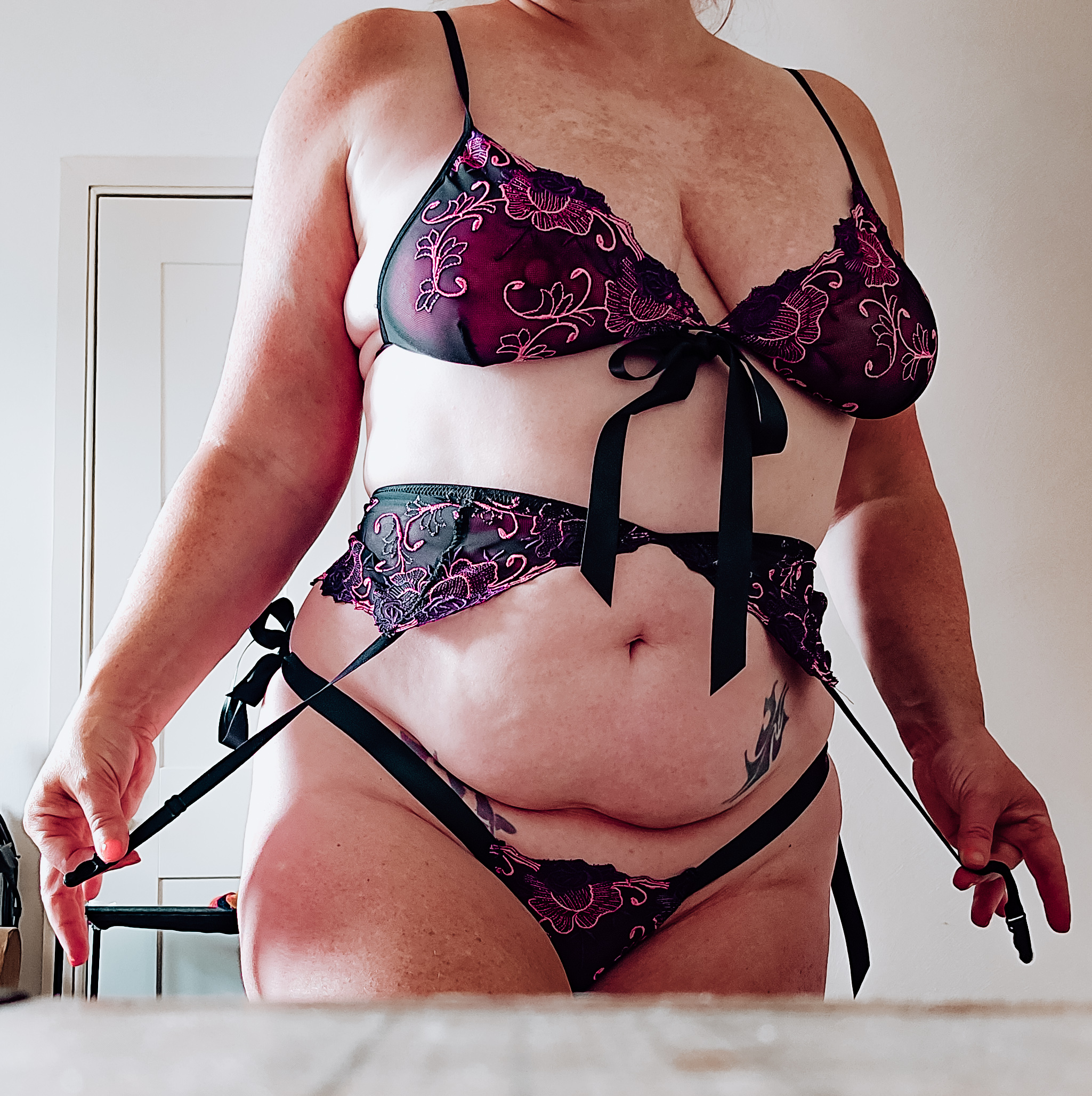Defining Pansexuality
Understanding sexual orientation is an ongoing journey, marked by evolving definitions and increasing inclusivity. One term gaining prominence in this landscape is pansexuality. Pansexuality extends beyond traditional labels, encompassing attraction to individuals regardless of their gender identity or expression.
Beyond the Binary
Pansexuality challenges the limitations of binary thinking about sexual orientation. It recognizes that attraction is fluid and multifaceted, existing on a spectrum rather than within rigid categories. Unlike bisexuality, which typically refers to attraction to two genders (often men and women), pansexuality encompasses attraction to all genders, including transgender, non-binary, and genderfluid individuals.
At its core, pansexuality celebrates the beauty of diverse identities and recognizes that love and attraction can blossom across a wide range of gender expressions. It emphasizes inclusivity and affirms the validity of experiences that fall outside the traditional norms.
Understanding pansexuality requires moving beyond assumptions and embracing a more expansive view of human connection.
Attraction to All Genders
Pansexuality is an identity characterized by attraction to individuals regardless of their gender identity or expression. This means pansexual individuals can be attracted to men, women, transgender people, non-binary people, and anyone else,
It’s important to note that pansexuality differs from bisexuality, which typically refers to attraction to two genders. Pansexuality encompasses attraction to all genders, emphasizing a fluid and expansive understanding of attraction.
Challenging Traditional Labels
Pansexuality challenges traditional labels by embracing a more inclusive understanding of sexual orientation. It moves beyond the limitations of binary thinking and recognizes that attraction can exist on a spectrum rather than within rigid categories.
A pansexual individual is attracted to people regardless of their gender identity or expression. This means they may be attracted to men, women, transgender individuals, non-binary people, and anyone else, recognizing that gender is not a defining factor in attraction.
Pansexuality emphasizes fluidity and diversity, celebrating the beauty of different gender expressions and affirming the validity of experiences outside traditional norms.
Historical Context of Pansexuality

Throughout history, societal norms have often confined individuals to rigid categories of sexual orientation. However, the understanding of human sexuality has evolved significantly, paving the way for more fluid and inclusive definitions. The emergence of pansexuality as a distinct term reflects this shift in perspective, challenging traditional binary concepts and embracing the diversity of human experience.

Early Understandings of Sexuality
Pansexuality’s history is intertwined with evolving understandings of sexuality. While the term itself emerged more recently, ideas about attraction transcending rigid gender boundaries have existed for centuries. Early understandings often lacked the explicit terminology we use today, but historical accounts and cultural narratives reveal a spectrum of sexual experiences that challenged traditional norms.
- Ancient Greek society had concepts like “erastes” (the older male lover) and “eromenos” (the younger male beloved), encompassing relationships that blurred gender lines.
- Throughout history, various cultures have recognized fluidity in gender roles and sexual expression, often expressed through myths, folklore, and artistic representations.
- The Victorian era’s emphasis on rigid gender roles and binary sexuality pushed non-normative expressions underground. However, individuals still found ways to connect and experience love outside these constraints.
The rise of the LGBTQ+ rights movement in the mid-20th century further challenged traditional notions of sexual orientation. As language evolved, the term “pansexual” gained traction in the late 20th century, providing a more accurate and inclusive way to describe attraction that extends beyond gender binaries.
Evolution of the Term “Pansexual”
Pansexuality is an identity characterized by attraction to individuals regardless of their gender identity or expression. This means pansexual individuals can be attracted to men, women, transgender people, non-binary people, and anyone else. It’s important to note that pansexuality differs from bisexuality, which typically refers to attraction to two genders.
Pansexuality encompasses attraction to all genders, emphasizing a fluid and expansive understanding of attraction.
Pansexuality challenges traditional labels by embracing a more inclusive understanding of sexual orientation. It moves beyond the limitations of binary thinking and recognizes that attraction can exist on a spectrum rather than within rigid categories.
A pansexual individual is attracted to people regardless of their gender identity or expression. This means they may be attracted to men, women, transgender individuals, non-binary people, and anyone else, recognizing that gender is not a defining factor in attraction.
Pansexuality emphasizes fluidity and diversity, celebrating the beauty of different gender expressions and affirming the validity of experiences outside traditional norms.
Throughout history, societal norms have often confined individuals to rigid categories of sexual orientation. However, the understanding of human sexuality has evolved significantly, paving the way for more fluid and inclusive definitions. The emergence of pansexuality as a distinct term reflects this shift in perspective, challenging traditional binary concepts and embracing the diversity of human experience.
Pansexuality’s history is intertwined with evolving understandings of sexuality. While the term itself emerged more recently, ideas about attraction transcending rigid gender boundaries have existed for centuries. Early understandings often lacked the explicit terminology we use today, but historical accounts and cultural narratives reveal a spectrum of sexual experiences that challenged traditional norms.
- Ancient Greek society had concepts like “erastes” (the older male lover) and “eromenos” (the younger male beloved), encompassing relationships that blurred gender lines.
- Throughout history, various cultures have recognized fluidity in gender roles and sexual expression, often expressed through myths, folklore, and artistic representations.
- The Victorian era’s emphasis on rigid gender roles and binary sexuality pushed non-normative expressions underground. However, individuals still found ways to connect and experience love outside these constraints.
The rise of the LGBTQ+ rights movement in the mid-20th century further challenged traditional notions of sexual orientation. As language evolved, the term “pansexual” gained traction in the late 20th century, providing a more accurate and inclusive way to describe attraction that extends beyond gender binaries.
Intersection with Other Identities
Pansexuality is an identity characterized by attraction to individuals regardless of their gender identity or expression. This means pansexual individuals can be attracted to men, women, transgender people, non-binary people, and anyone else. It’s important to note that pansexuality differs from bisexuality, which typically refers to attraction to two genders.
Pansexuality encompasses attraction to all genders, emphasizing a fluid and expansive understanding of attraction.
Pansexuality challenges traditional labels by embracing a more inclusive understanding of sexual orientation. It moves beyond the limitations of binary thinking and recognizes that attraction can exist on a spectrum rather than within rigid categories.
A pansexual individual is attracted to people regardless of their gender identity or expression. This means they may be attracted to men, women, transgender individuals, non-binary people, and anyone else, recognizing that gender is not a defining factor in attraction.
Pansexuality emphasizes fluidity and diversity, celebrating the beauty of different gender expressions and affirming the validity of experiences outside traditional norms.
Throughout history, societal norms have often confined individuals to rigid categories of sexual orientation. However, the understanding of human sexuality has evolved significantly, paving the way for more fluid and inclusive definitions. The emergence of pansexuality as a distinct term reflects this shift in perspective, challenging traditional binary concepts and embracing the diversity of human experience.
Pansexuality’s history is intertwined with evolving understandings of sexuality. While the term itself emerged more recently, ideas about attraction transcending rigid gender boundaries have existed for centuries. Early understandings often lacked the explicit terminology we use today, but historical accounts and cultural narratives reveal a spectrum of sexual experiences that challenged traditional norms.
- Ancient Greek society had concepts like “erastes” (the older male lover) and “eromenos” (the younger male beloved), encompassing relationships that blurred gender lines.
- Throughout history, various cultures have recognized fluidity in gender roles and sexual expression, often expressed through myths, folklore, and artistic representations.
- The Victorian era’s emphasis on rigid gender roles and binary sexuality pushed non-normative expressions underground. However, individuals still found ways to connect and experience love outside these constraints.
The rise of the LGBTQ+ rights movement in the mid-20th century further challenged traditional notions of sexual orientation. As language evolved, the term “pansexual” gained traction in the late 20th century, providing a more accurate and inclusive way to describe attraction that extends beyond gender binaries.
Intersectionality is crucial when understanding pansexuality. Pansexual individuals may hold other identities, such as race, ethnicity, religion, or disability status, which intersect with their sexual orientation and shape their experiences. Recognizing these intersections allows for a more nuanced understanding of the diverse ways pansexuality manifests.
For big penis sleeve example, a Black pansexual person might face unique challenges due to racism and homophobia, highlighting the importance of intersectional approaches to advocacy and support.
Experiences of Pansexual Individuals
Understanding pansexuality requires moving beyond assumptions and embracing a more expansive view of human connection. Pansexuality is an identity characterized by attraction to individuals regardless of their gender identity or expression. This means pansexual individuals can be attracted to men, women, transgender people, non-binary people, and anyone else. It’s important to note that pansexuality differs from bisexuality, which typically refers to attraction to two genders.

Pansexuality encompasses attraction to all genders, emphasizing a fluid and expansive understanding of attraction.
Pansexuality challenges traditional labels by embracing a more inclusive understanding of sexual orientation. It moves beyond the limitations of binary thinking and recognizes that attraction can exist on a spectrum rather than within rigid categories.
A pansexual individual is attracted to people regardless of their gender identity or expression. This means they may be attracted to men, women, transgender individuals, non-binary people, and anyone else, recognizing that gender is not a defining factor in attraction.
Pansexuality emphasizes fluidity and diversity, celebrating the beauty of different gender expressions and affirming the validity of experiences outside traditional norms.
Diversity Within the Community
Understanding pansexuality requires moving beyond assumptions and embracing a more expansive view of human connection. Pansexuality is an identity characterized by attraction to individuals regardless of their gender identity or expression. This means pansexual individuals can be attracted to men, women, transgender people, non-binary people, and anyone else. It’s important to note that pansexuality differs from bisexuality, which typically refers to attraction to two genders.
Pansexuality encompasses attraction to all genders, emphasizing a fluid and expansive understanding of attraction.
Pansexuality challenges traditional labels by embracing a more inclusive understanding of sexual orientation. It moves beyond the limitations of binary thinking and recognizes that attraction can exist on a spectrum rather than within rigid categories.
A pansexual individual is attracted to people regardless of their gender identity or expression. This means they may be attracted to men, women, transgender individuals, non-binary people, and anyone else, recognizing that gender is not a defining factor in attraction.
Pansexuality emphasizes fluidity and diversity, celebrating the beauty of different gender expressions and affirming the validity of experiences outside traditional norms.
Diversity within the pansexual community is vast and vibrant. Like any other community, pansexual people come from diverse backgrounds, cultures, ethnicities, religions, and socioeconomic statuses. This diversity enriches the pansexual experience and contributes to its strength and resilience.
Within the pansexual community itself, there are variations in how individuals understand and express their identity. Some pansexual people identify as exclusively attracted to people of all genders, while others may have additional attractions or complexities within their sexual orientation.
It’s important to remember that everyone’s experience with pansexuality is unique. Respecting individual experiences and preferences is crucial for fostering a supportive and inclusive environment.
Challenges and Stigma
Pansexual individuals, like all people, face a range of challenges and stigmas based on societal norms and prejudices. One significant challenge is the lack of widespread understanding and acceptance of pansexuality.
Many people still struggle to grasp the concept of attraction that transcends gender binaries, leading to misconceptions and stereotypes. This lack of understanding can result in discrimination, bullying, and social isolation for pansexual individuals.
Another challenge is internalized homophobia and biphobia, which can affect individuals who identify as pansexual. These internalized biases may stem from societal messages that equate same-gender attraction with negative qualities or experiences. This can lead to self-doubt, shame, and difficulty embracing one’s true identity.
The intersection of pansexuality with other identities like race, religion, or disability status can amplify these challenges. Pansexual individuals who belong to marginalized communities may face compounded discrimination and prejudice based on multiple aspects of their identity.
Stigma surrounding pansexuality can also manifest in harmful stereotypes and generalizations. For example, some people may assume that pansexual individuals are promiscuous or confused about their sexuality. These stereotypes perpetuate misinformation and contribute to a climate of intolerance.
Overcoming these challenges requires ongoing education, advocacy, and open dialogue. It’s crucial to challenge misconceptions about pansexuality, promote understanding and acceptance, and create safe and supportive spaces for pansexual individuals to thrive.
Finding Community and Support
Finding community and support is essential for the well-being of any individual, especially those who identify as pansexual. Pansexual people often seek out spaces where they can connect with others who understand their experiences and offer a sense of belonging.
Online platforms and social media have become increasingly important resources for connecting with other pansexual individuals. Groups, forums, and online communities dedicated to pansexuality provide opportunities for sharing stories, offering support, and finding friendship.
In-person support groups and organizations can also be invaluable. These groups offer a space for personal growth, healing, and building community within local or regional settings.
Local LGBTQ+ centers often host events and programs specifically for pansexual individuals, providing a welcoming environment to meet others and access resources.
University campuses frequently have student organizations dedicated to pansexuality or LGBTQ+ inclusion, creating supportive networks within academic communities.
Building community can also extend beyond formal organizations. Pansexual individuals may find connection through shared hobbies, interests, or activism, forming bonds with like-minded people regardless of their sexual orientation.
Ultimately, finding a sense of belonging and acceptance is crucial for the well-being of pansexual individuals. By connecting with others who share similar experiences and values, they can build strong support systems that foster resilience and empower them to live authentically.
Navigating Relationships as a Pansexual Person
Navigating relationships as a pansexual person involves understanding the fluidity of attraction and embracing a diverse range of connections. Pansexuality, unlike bisexuality which typically refers to attraction to two genders, encompasses attraction to all genders, recognizing that gender is not a determining factor in romantic or sexual feelings.
Communicating Attraction and Preferences
Open communication is paramount when navigating relationships as a pansexual person. Be upfront about your identity and preferences from the start, ensuring your partner understands what pansexuality means to you. Explain how you experience attraction and what that looks like in a relationship context.
Don’t shy away from discussing boundaries and expectations regarding sexual expression, intimacy, and emotional connection. Be clear about what makes you comfortable and what you are looking for in a relationship.
Be patient and understanding if your partner needs time to learn and adjust to the concept of pansexuality. Educate them about your experiences and answer their questions honestly and openly.
Remember that every relationship is unique, and communication should be an ongoing process. As you grow together, continue to check in with each other about your needs, desires, and comfort levels.
Addressing Misconceptions and Prejudice
Navigating relationships as a pansexual person involves understanding the fluidity of attraction and embracing a diverse range of connections. Pansexuality, unlike bisexuality which typically refers to attraction to two genders, encompasses attraction to all genders, recognizing that gender is not a determining factor in romantic or sexual feelings.
Open communication is paramount when navigating relationships as a pansexual person. Be upfront about your identity and preferences from the start, ensuring your partner understands what pansexuality means to you. Explain how you experience attraction and what that looks like in a relationship context.
Don’t shy away from discussing boundaries and expectations regarding sexual expression, intimacy, and emotional connection. Be clear about what makes you comfortable and what you are looking for in a relationship.
Be patient and understanding if your partner needs time to learn and adjust to the concept of pansexuality. Educate them about your experiences and answer their questions honestly and openly.
Remember that every relationship is unique, and communication should be an ongoing process. As you grow together, continue to check in with each other about your needs, desires, and comfort levels.
Misconceptions and prejudice can create barriers to understanding and acceptance for pansexual individuals. Addressing these challenges requires a multifaceted approach that involves:
- Education and awareness: Providing accurate information about pansexuality through educational programs, public service announcements, and media representation helps dispel myths and stereotypes.
- Open dialogue and conversation: Encouraging open and honest conversations about sexuality, gender identity, and relationships fosters understanding and empathy.
- Challenging homophobia and biphobia: Addressing internalized biases and societal prejudices that target LGBTQ+ individuals creates a more inclusive environment for pansexual people.
- Promoting visibility and representation: Showcasing pansexual individuals in positive and authentic ways through media, literature, and other forms of expression normalizes their experiences and fosters acceptance.
- Creating safe spaces: Establishing supportive communities and organizations provides a sense of belonging and empowers pansexual people to thrive.
By actively working to dismantle these barriers, we can create a more just and equitable society where pansexual individuals can live openly, authentically, and free from discrimination.
Celebrating Inclusive Love and Relationships**
Navigating relationships as a pansexual person involves understanding the fluidity of attraction and embracing a diverse range of connections. Pansexuality, unlike bisexuality which typically refers to attraction to two genders, encompasses attraction to all genders, recognizing that gender is not a determining factor in romantic or sexual feelings.
Open communication is paramount when navigating relationships as a pansexual person. Be upfront about your identity and preferences from the start, ensuring your partner understands what pansexuality means to you. Explain how you experience attraction and what that looks like in a relationship context. Don’t shy away from discussing boundaries and expectations regarding sexual expression, intimacy, and emotional connection. Be clear about what makes you comfortable and what you are looking for in a relationship.
Be patient and understanding if your partner needs time to learn and adjust to the concept of pansexuality. Educate them about your experiences and answer their questions honestly and openly. Remember that every relationship is unique, and communication should be an ongoing process. As you grow together, continue to check in with each other about your needs, desires, and comfort levels.
Navigating relationships as a pansexual person involves understanding the fluidity of attraction and embracing a diverse range of connections. Pansexuality, unlike bisexuality which typically refers to attraction to two genders, encompasses attraction to all genders, recognizing that gender is not a determining factor in romantic or sexual feelings.
Open communication is paramount when navigating relationships as a pansexual person. Be upfront about your identity and preferences from the start, ensuring your partner understands what pansexuality means to you. Explain how you experience attraction and what that looks like in a relationship context. Don’t shy away from discussing boundaries and expectations regarding sexual expression, intimacy, and emotional connection. Be clear about what makes you comfortable and what you are looking for in a relationship.
Be patient and understanding if your partner needs time to learn and adjust to the concept of pansexuality. Educate them about your experiences and answer their questions honestly and openly. Remember that every relationship is unique, and communication should be an ongoing process. As you grow together, continue to check in with each other about your needs, desires, and comfort levels.
Misconceptions and prejudice can create barriers to understanding and acceptance for pansexual individuals. Addressing these challenges requires a multifaceted approach that involves:
- Education and awareness: Providing accurate information about pansexuality through educational programs, public service announcements, and media representation helps dispel myths and stereotypes.
- Open dialogue and conversation: Encouraging open and honest conversations about sexuality, gender identity, and relationships fosters understanding and empathy.
- Challenging homophobia and biphobia: Addressing internalized biases and societal prejudices that target LGBTQ+ individuals creates a more inclusive environment for pansexual people.
- Promoting visibility and representation: Showcasing pansexual individuals in positive and authentic ways through media, literature, and other forms of expression normalizes their experiences and fosters acceptance.
- Creating safe spaces: Establishing supportive communities and organizations provides a sense of belonging and empowers pansexual people to thrive.
- Understanding The Fluid Nature Of Sexual Orientation: A Look At Pansexuality - May 17, 2025
- The Growing Market For THC Beverages In The United States - May 17, 2025
- How To Get Rid Of Mental Crease Naturally Exercise? - May 16, 2025
